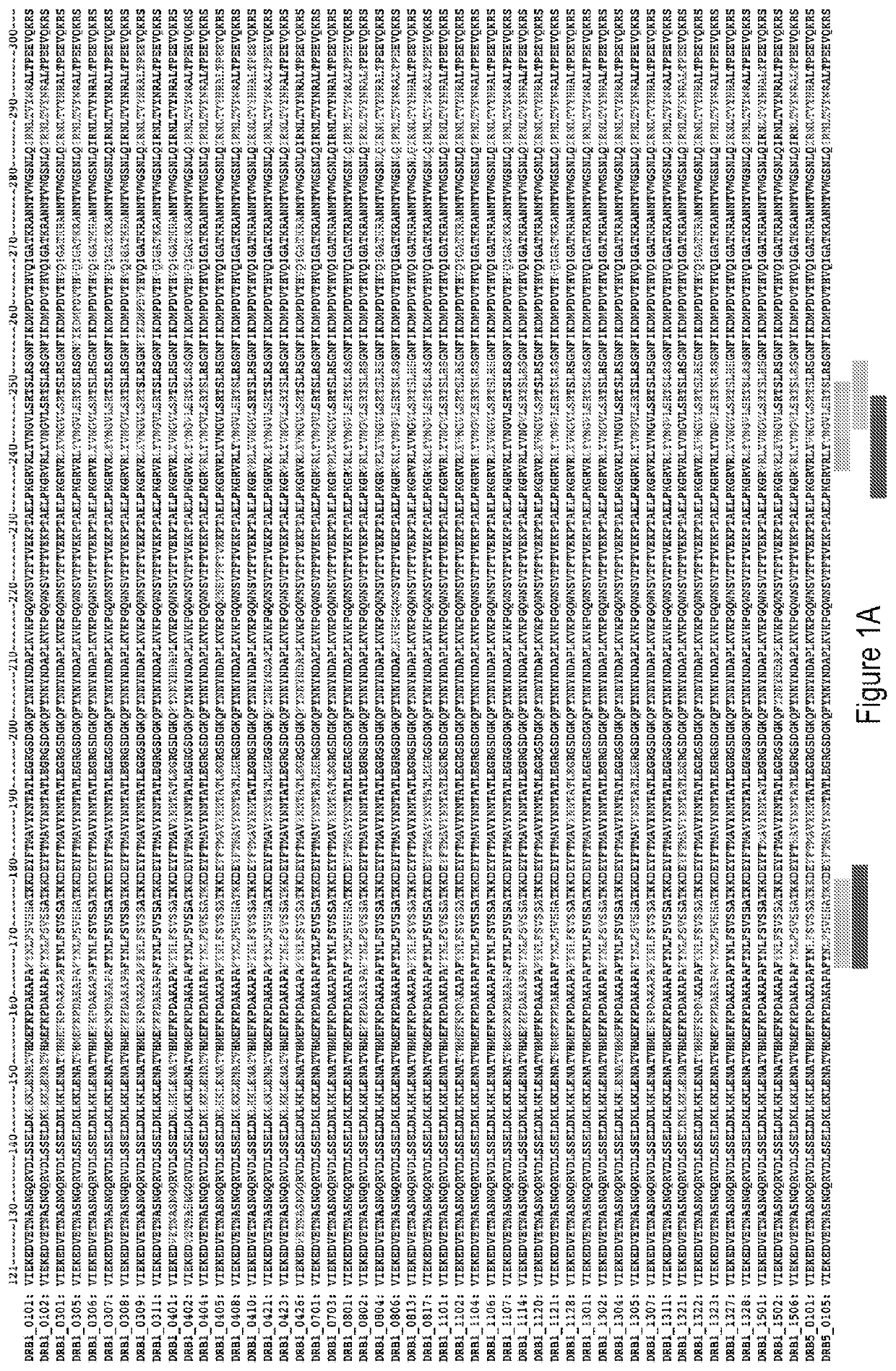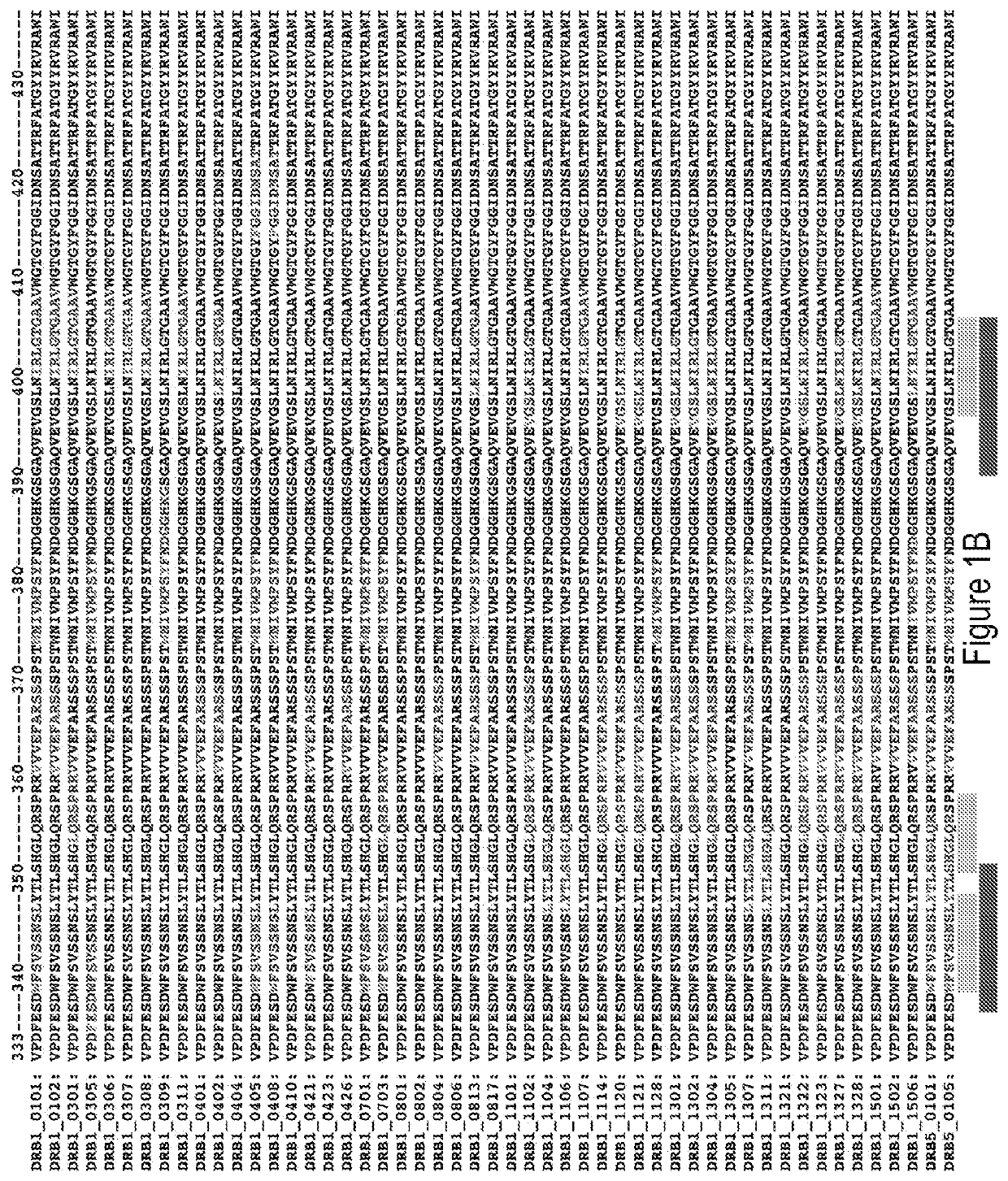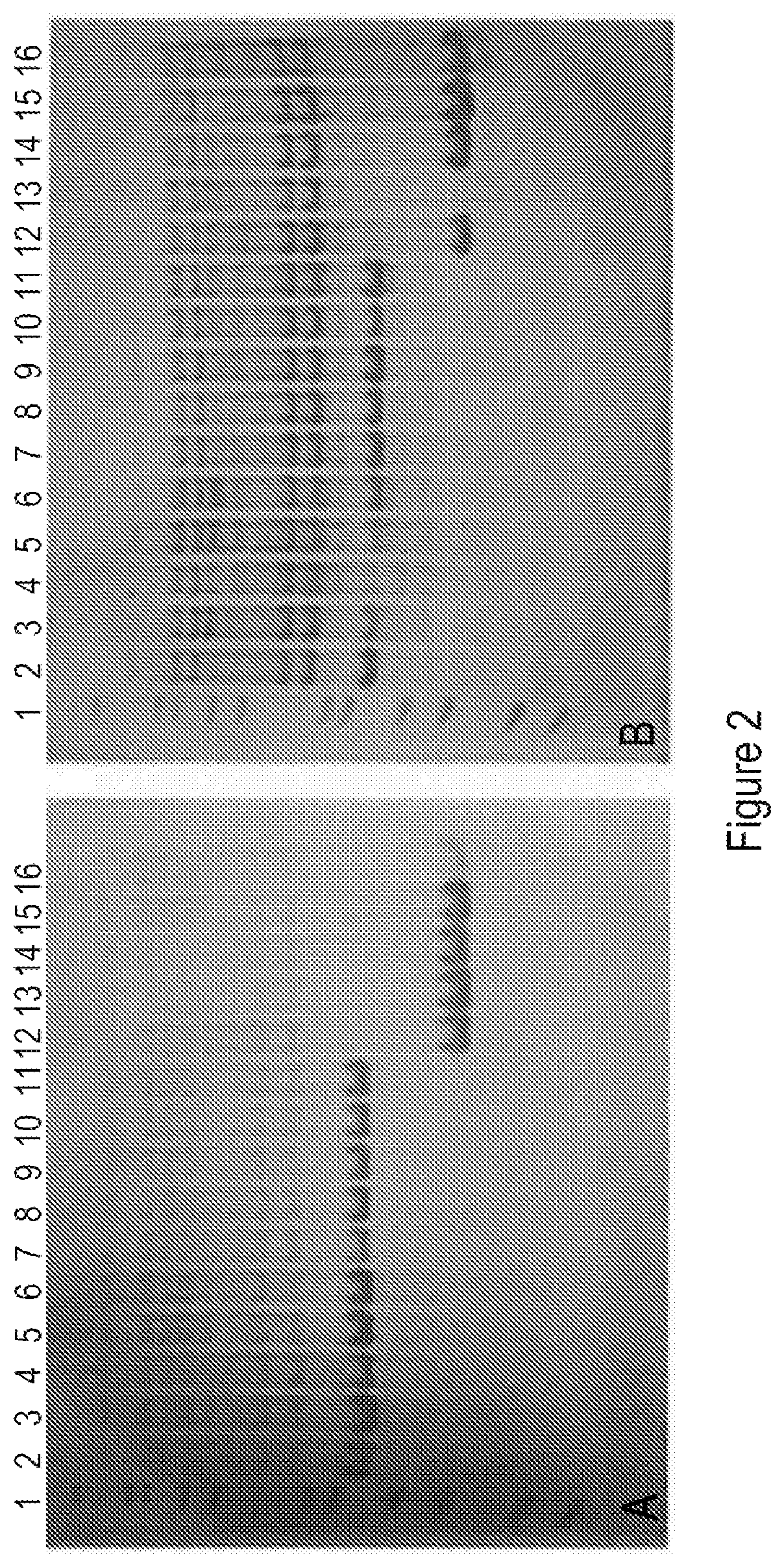Modified protein
a protein and protein technology, applied in the field of new drugs, can solve the problems of reducing the effectiveness, reducing the risk of adverse effects of the patient's immune response to the biologic, and altering the half-life of the therapeuti
- Summary
- Abstract
- Description
- Claims
- Application Information
AI Technical Summary
Benefits of technology
Problems solved by technology
Method used
Image
Examples
example 1
ory Mediators
[0228]Aim: To measure the innate immune response of mCBM-treated human lung epithelial cells (A549) by analysing levels of inflammatory mediators over time.
[0229]Administration of Sp2CBMTD to mammalian cells stimulated a pro-inflammatory response both in vitro and in vivo1,2. To determine whether this was still observed with modified hexameric sialic acid binding molecules, mammalian A549 cells were stimulated by the addition of 10 μg of biologic (Sp2CBMTD (aka SpOrig), HEX6 or HEX17 and cell culture medium was harvested at specific time-points post administration. The concentrations of inflammatory mediators were measured both by ELISA and a multiplex assay.
[0230]Human IL-8 (benchmark cytokine for the study) response using a human 1× Mouse CXCL1 / KC Quantikine ELISA Kit (R&D BioSystems). The concentration levels of IL-8 from stimulated A549 cells are shown in FIG. 6. It is evident that when A549 cells are stimulated with the modified hexamer HEX17, IL-8 levels are signi...
example 2
R8 Mouse Data
[0235]The objective of the study was to assess the efficacy of Sp2CBMTD (SpOrig) and its variants, in a mouse model of lethal influenza infection. Each of the candidate proteins were also administered in the absence of an influenza infection to assess whether they alone, caused any morbidity or mortality.
[0236]Survival, Clinical Scores and Weight Loss.
[0237]The results show that none of CBM2 (HEX17), CBM3 (HEX6) or CBM4 (WT, SpOrig) caused any overt morbidity or mortality alone. Administration of a single 100 μg dose of either CBM2 (HEX17), CBM3 (HEX6) and CBM4 (WT, SpOrig) one day prior to a lethal challenge with PR8 influenza virus elicited protection against PR8 infection, with greatest efficacy seen with HEX17 (100% survival), followed by SpOrig and then HEX6 (FIG. 8). Clinical scores were also lower with HEX17 compared to SpOrig and HEX6 (FIG. 9). Mice from single high dose treated groups that survived all lost weight at peak infection but soon recovered, in contra...
example 3
t of Repeat Intranasal Dosing of mCBMs, Sp2CBMTD and HEX17, in the Mouse
[0242]The objective of this study was to assess the clinical effect and immune response of repeat dosing of both Sp2CBMTD (SpOrig) and HEX17 in mice over time.
[0243]Experimental Procedures
[0244]Intranasal Dosing.
[0245]On Days 1, 15 and 29, cohorts of mice (10F, 10M BALB / c mice per agent) were dosed with 20 μg of either sterile PBS, Sp2CBMTD or HEX17 via the intranasal route, under recoverable gaseous anaesthesia (isoflurane / oxygen mix), at a fixed volume of 40 μL.
[0246]Body Weights and Post-Dose Observations.
[0247]All mice were weighed twice weekly from Day −1 until the end of the study (Day 35). Post-dose observations were recorded every 15 min for the first 2 h after dose administration and then every 30 min for the next 6 h.
[0248]Analysis of Tissue Samples.
[0249]Mouse tissue (serum and bronchoalveolar lavage (BAL)) were tested for anti-CBM antibody responses (IgG, IgA and IgM) against either Sp2CBMTD or HEX17...
PUM
| Property | Measurement | Unit |
|---|---|---|
| Tm | aaaaa | aaaaa |
| volume | aaaaa | aaaaa |
| time | aaaaa | aaaaa |
Abstract
Description
Claims
Application Information
 Login to View More
Login to View More - R&D
- Intellectual Property
- Life Sciences
- Materials
- Tech Scout
- Unparalleled Data Quality
- Higher Quality Content
- 60% Fewer Hallucinations
Browse by: Latest US Patents, China's latest patents, Technical Efficacy Thesaurus, Application Domain, Technology Topic, Popular Technical Reports.
© 2025 PatSnap. All rights reserved.Legal|Privacy policy|Modern Slavery Act Transparency Statement|Sitemap|About US| Contact US: help@patsnap.com



